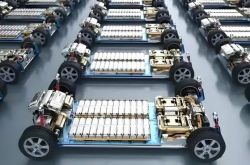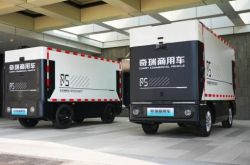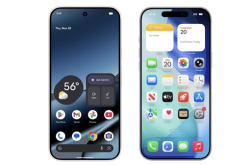Huawei's 7999 yuan foldable phone: why does it claim to be affordable for everyone?
![]() 03/24 2025
03/24 2025
![]() 440
440

In an era of transparent information, consumer trust cannot withstand overdraft.
01
Chain reaction after the launch of Pura X
Many people did not expect that Huawei's new product would receive such a negative reputation.
The 12+256GB version is priced at 7499 yuan, and the 12+512GB version at 7999 yuan. The Collector's Edition pricing is: 16+512GB version at 8999 yuan, and the 16+1TB version at 9999 yuan.
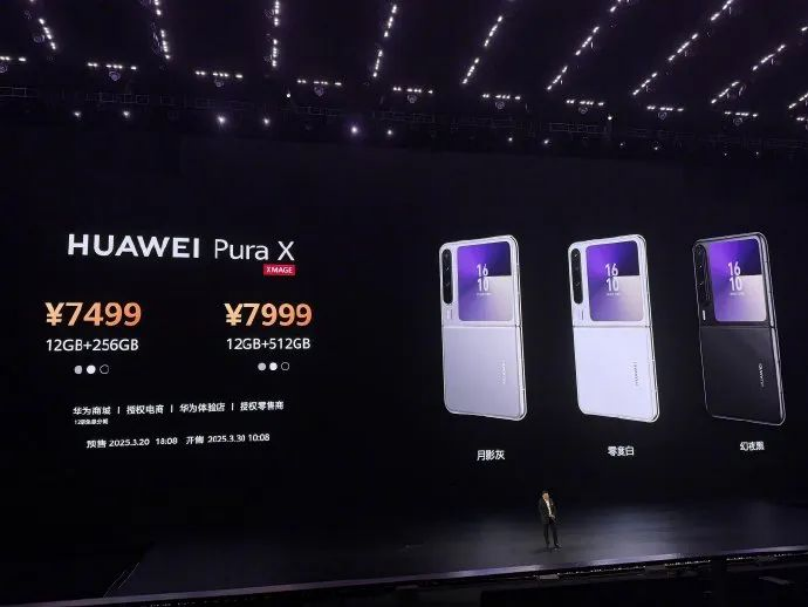
Yu Chengdong, Executive Director of Huawei, Chairman of the Terminal BG, and Chairman of the Intelligent Automotive Solutions BU, expressed confidence in this new product: "HUAWEI Pura X is both a phone and more than a phone. It breaks the boundaries of terminal form factors, combining the reading experience of an e-book, the immersive viewing of a tablet, and the compactness and convenience of a foldable phone. It is a technological new species that transcends imagination."
Why is it called an Ultra Fold? Because this phone and general foldable phones are revolutionary in size, very different.
Unlike the current mainstream flagship's 16:10 ratio, with an internal and external screen design, the main screen is a 6.3-inch OLED with a resolution of 2120*1320. The secondary screen is 3.5 inches, supports 1-120Hz adaptive refresh, and has a peak brightness of 2500 nits. In other aspects, it also supports Tiantong satellite communication, Xuanwu water droplet hinge, AI Xiao Yi, and integrates the Pangu and DeepSeek dual models.
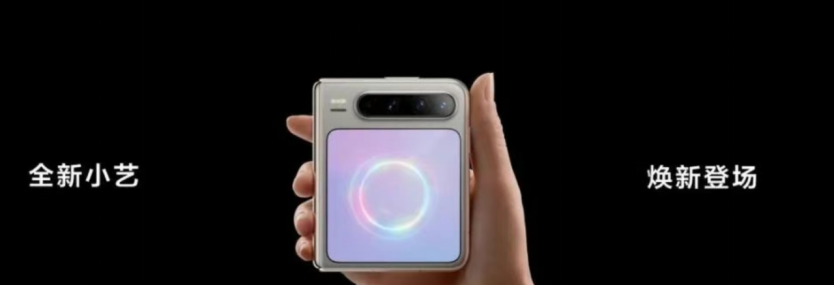
Some netizens joked: "In the folded state, it's like an oversized smartwatch, and in the unfolded state, it's like a mini tablet, but it just doesn't look like a phone."
But what Yu Chengdong didn't expect was that the Huawei Pura X was released with a starting price of 7499 yuan, forming a stark contrast with Yu Chengdong's previous promotion that "everyone in the country can afford it," sparking widespread controversy.
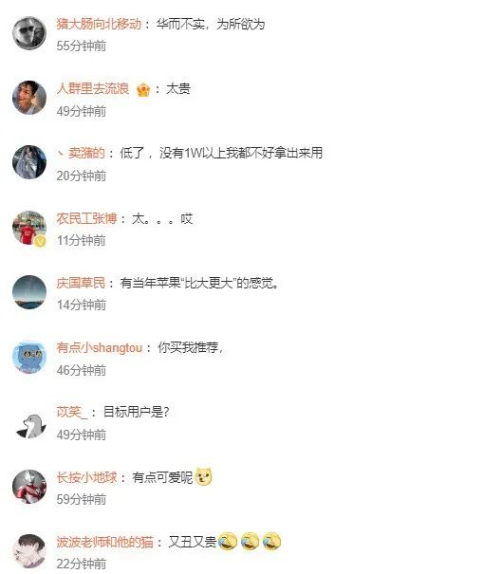
Many netizens joked, "Even in installments, it's a stretch. How can we talk about everyone being able to afford it?" Some even called it a "price assassin".
Although Huawei offered a 12-month interest-free installment plan, at the end of the conference, it used the 12-month interest-free plan to break down the 7999 yuan into a daily payment of 22 yuan, explaining why everyone can afford it. It's equivalent to giving up one less cup of Starbucks a day to own the world's first Ultra Fold flagship.
However, this measure failed to quell the doubts and was instead accused of being "detached from reality".
This disconnect between price and promotional promises has damaged brand trust, especially among Huawei's loyal users who Outspoken "the higher the expectations, the greater the disappointment".
Some even directly compared Apple with Huawei, believing that Huawei is now following Apple's old path: lack of innovation and a strong psychological gap for users. For example, Pura X features a 16:10 ratio "Ultra Fold" design, which increases the display area by 6%, but netizens believe it is only a "minor adjustment to the screen ratio" rather than a revolutionary innovation.
There was even competitive marketing taking advantage of the situation.
Huawei's marketing mishap unexpectedly made its competitor Xiaomi the winner of public opinion. Netizens joked: "Lei Jun didn't do anything, but because Yu Chengdong 'stabbed himself twice,' he won easily."
Wang Teng, a Xiaomi executive, initiated a vote on Weibo asking "What price is considered affordable for everyone?", which was accused of "rubbing it in," further amplifying Huawei's embarrassment. This type of marketing not only weakened Huawei's market position but also strengthened Xiaomi's "cost-effective" label.
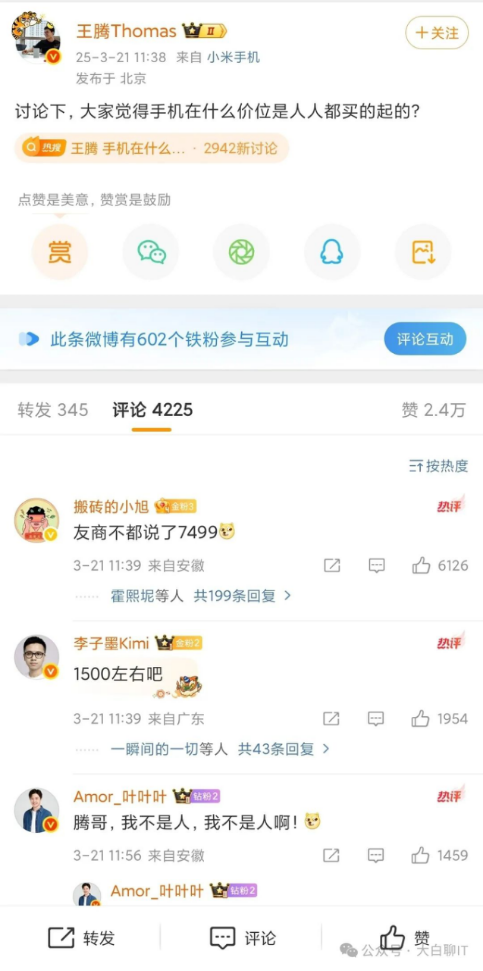
The capital market also responded significantly. In the past, whenever Huawei released a new product, it basically boosted related concepts. However, after the release of Pura X, the related stocks plummeted. Fengzhushou fell by more than 10% in late trading, and highly related stocks such as Furi Electronics and Guanghong Technology fell by more than 5%. This capital market reaction reflects market doubts about Huawei's high-end strategy.
Faced with criticism, Yu Chengdong later said in a live broadcast, "I'm not very rigorous in my speech, and my EQ is relatively low. Everyone grabs onto small handles and loopholes to criticize me fiercely. Some people feel that I don't leave myself any room or a way out in my speech, making it seem like I'm talking big."
At the same time, Yu Chengdong emphasized, "Many people expect it to be very cheap, but the actual costs are very high. We use flagship phone chips, cameras, and other configurations, as well as its folding hinge. We adopted very new technology, and its cost is higher than that of ordinary flagship straight phones."
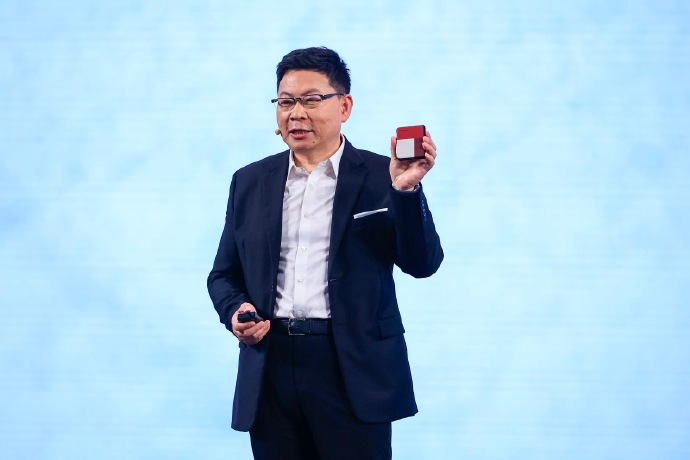
"I read online comments, and there are some critical voices. I sincerely accept everyone's opinions and make timely improvements. I will definitely bring the best products to consumers."
02
Why launch a phone like Pura X?
Many people have questions about why Huawei would launch such a phone.
On the one hand, it is for strategic layout in the foldable screen market.
Huawei launched Pura X to further consolidate its leading position in the foldable screen market. According to IDC data, Huawei's foldable screen market share reaches 73%. The release of Pura X aims to widen the gap with competitors and seize the high-end market through technological innovations such as the 16:10 Ultra Fold screen, Red Maple imaging system, and Xuanwu water droplet hinge.
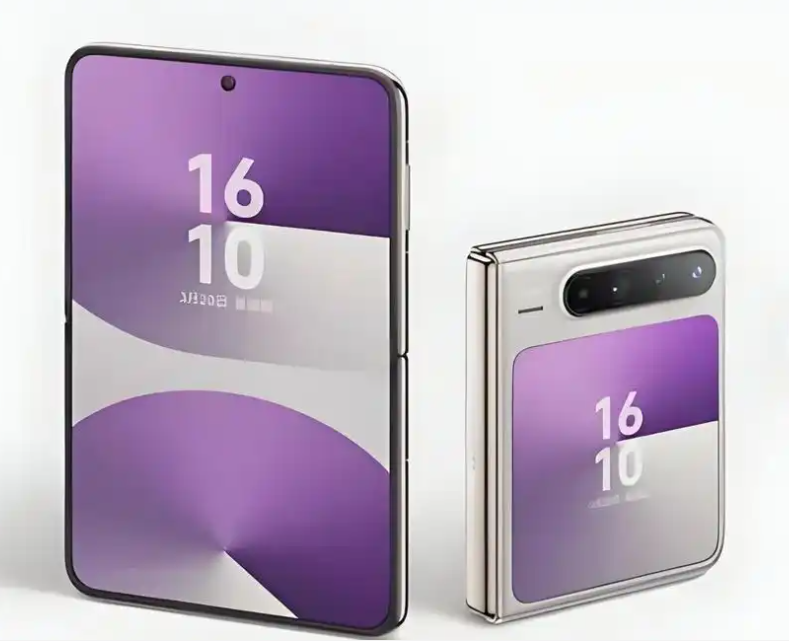
Although the price is not that affordable, the design is definitely bold. Pura X's 16:10 Ultra Fold screen design is not a simple adjustment of the ratio but a complete transformation of the folding logic. It is said that the screen ratio precisely replicates the golden size of 1.4:1 of The New Yorker magazine, providing 60% more display area than traditional foldable screens.
Yu Chengdong admitted in a live broadcast the day after the conference: "The research and development cost of foldable screens is three times that of straight phones, but Huawei must explore the industry."
IDC data shows that China's foldable screen market is expanding at an annual growth rate of 31%. As the next important trend, it is not surprising that Huawei is making such a big deal out of foldable screens.
On the other hand, it is the deep adaptation of the HarmonyOS ecosystem.
Pura X is the first phone to fully carry HarmonyOS 5, marking Huawei's terminals officially entering the native HarmonyOS era.
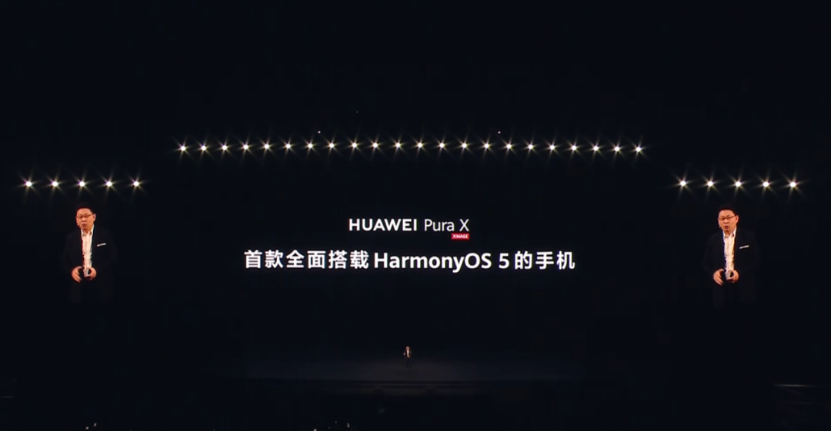
Through the deep adaptation of the HarmonyOS ecosystem, Huawei attempts to create a differentiated experience, weaken the controversy surrounding a single product, and promote the coordinated development of the HarmonyOS intelligent travel ecosystem, such as AITO new cars and smart homes.
More and more HarmonyOS version applications and meta-services have been listed on the HarmonyOS application market, covering more than a dozen fields such as automobiles, education, travel and accommodation, financial management, business office, shopping, and social networking.
It should be noted that the development of native HarmonyOS is not merely a struggle for commercial discourse power but is of greater significance in the national technological narrative beyond commercial competition, breaking the US monopoly on the software ecosystem.
2025 is the year of maturity and completeness of the HarmonyOS ecosystem. Yu Chengdong has set a goal: "In 2025, HarmonyOS will invest heavily in the ecosystem. 100,000 applications are a sign of ecosystem maturity, which is a critical goal for the next six months to a year."
It is worth mentioning that internet and hardware companies are intensively recruiting HarmonyOS-related technical positions, creating many new employment and training opportunities. According to Lagou recruitment data, as of November 2024, the number of new job postings for HarmonyOS development engineers increased by 16.57% year-on-year, showing a significant increase. At the same time, the average monthly salary for HarmonyOS development engineers increased by 11.91% year-on-year, 1.22 times that of other technical positions, with a significant premium over traditional development positions.
In addition, this is also Huawei's attempt to break through the female market.
Pura X is also targeted at the female market, attracting female users through fashionable color schemes and a 3.5-inch "compact mirror outer screen". This strategy aims to break the stereotype of foldable screens having a "straight male aesthetic" and expand the user base. At the same time, Huawei used the endorsement of its own family member Yao Anna, hoping to gain more recognition and influence in the female market.
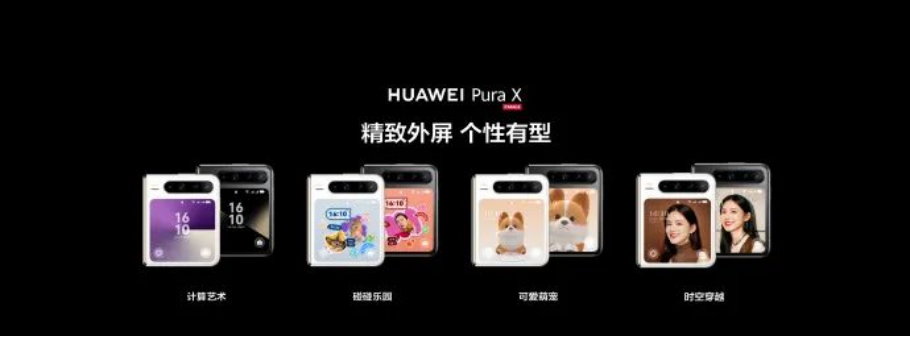
But it has to be said that Huawei, which is ambitious and daring to try, has indeed suffered considerable reputation backlash this time.
Yu Chengdong's "dare to speak" was once a marketing tool for Huawei, but this time, over-inflating expectations, such as "revolutionary innovation" and "affordable for everyone," damaged brand trust.
At the beginning of its launch, "pure-blooded HarmonyOS" received "bad reviews" after a wave of cheers: many applications were not fully adapted, resulting in missing functions; commonly used software had not been migrated, and system stability was insufficient.
Netizens joked: "You have to divide Yu's words by two to get the real level." This "wolf coming" effect will gradually reduce consumer trust in his statements over time.
Yu Chengdong's "big mouth" persona has evolved from a marketing tool to a brand risk. Earlier, Zunjie also encountered a public opinion crisis.
It has to be said that when consumers start automatically applying an "exaggerated filter" to his statements, it is obviously not conducive to Huawei's positive image.
03
Can Huawei win back its reputation after the "flip"?
In my opinion, how can Huawei bridge the "gap" between its marketing and products?
Yu Chengdong needs to reduce "pie-in-the-sky" marketing. Over-promising not only overdrafts brand trust but may also lead to market backlash. In the future, Huawei should focus more on pragmatism in its promotion and avoid raising user expectations.
Pricing also needs to be more cautious. Although Huawei emphasizes the large investment in foldable screen research and development, consumer acceptance of "technology premiums" is nearing a critical point. How to balance innovation costs and market expectations has become an important issue. Huawei needs to be more transparent in its pricing strategy to avoid being out of touch with user needs.
It is also necessary to pay more attention to user needs. Netizens call on companies to "go among the masses" rather than "stay high above." As Lei Jun said, "Technology should serve the masses." Piling up technology that is detached from real needs will eventually be eliminated by the market. Huawei needs to pay more attention to the core needs of users rather than blindly pursuing hardware specifications.
Although Pura X comes with HarmonyOS 5.0 and upgraded imaging and communication functions, its market performance is still questionable. What users expect next is Huawei's pragmatic promotion: reducing "pie-in-the-sky" marketing and letting the product speak for itself. Huawei can also rely on the HarmonyOS intelligent travel ecosystem, such as AITO new cars and smart homes, to create a differentiated experience, weaken controversy surrounding a single product, and truly move from "usable" to "user-friendly".
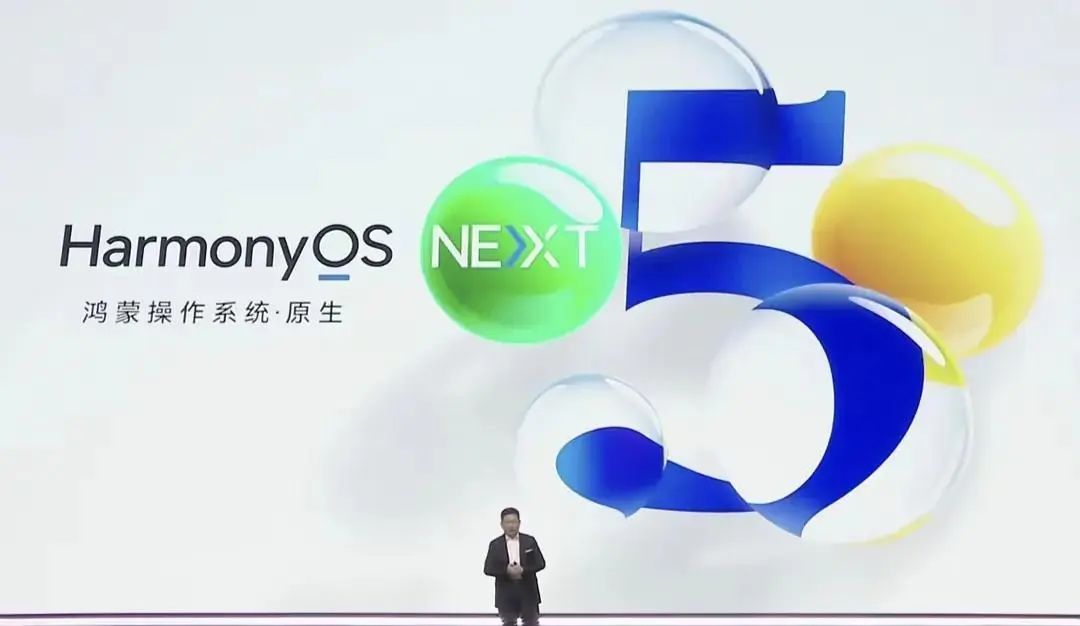
In short, Huawei's "flip" has taught the industry a lesson: In an era of transparent information, consumer trust cannot withstand overdraft. Whether Huawei can learn from this crisis may determine whether it can maintain its reputation as the "light of domestic technology" in the future.



